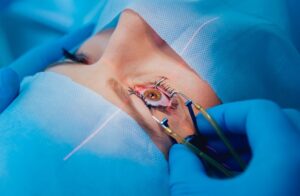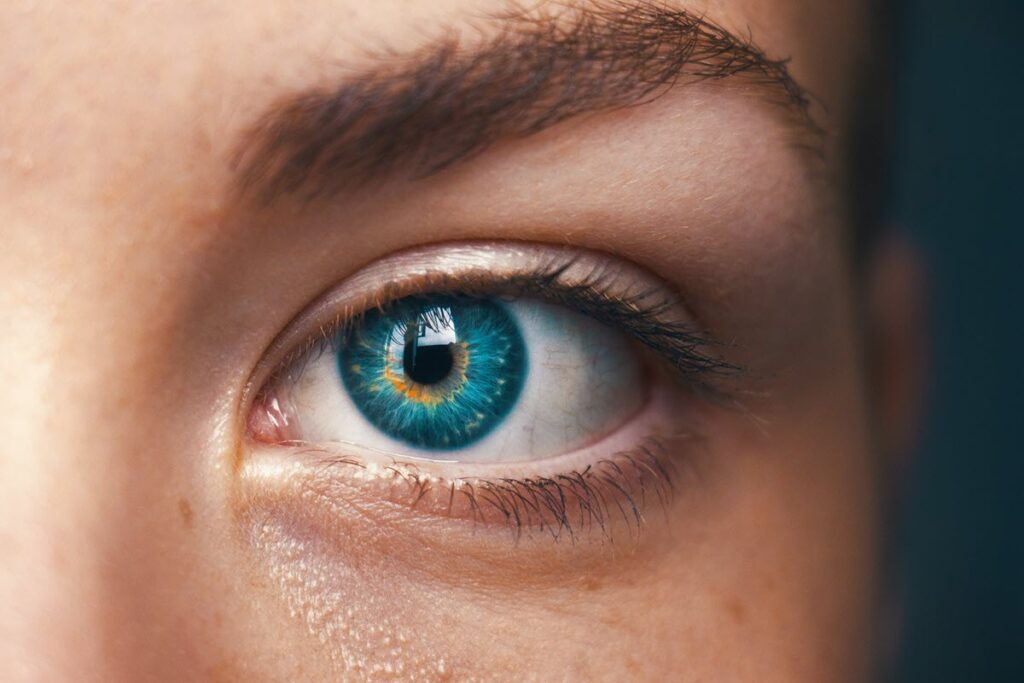Vision is arguably our most valued sense, and when it comes to improving it, LASIK surgery has emerged as a popular choice. However, while this revolutionary procedure can be life-changing, the steps taken post-surgery are equally important for the healing process and overall outcome. This blog post will guide you through the crucial period after your LASIK procedure, detailing the precautions you need to take to ensure the best possible result. After all, safeguarding your vision post-LASIK is as vital as the surgery itself.
Contents
What Is LASIK Surgery?
 LASIK, an acronym for Laser-Assisted In Situ Keratomileusis, is a popular form of refractive eye surgery. It is used to correct various vision problems. Such as myopia (nearsightedness), hyperopia (farsightedness), and astigmatism. It effectively reduces or even eliminates the need for eyeglasses or contact lenses.
LASIK, an acronym for Laser-Assisted In Situ Keratomileusis, is a popular form of refractive eye surgery. It is used to correct various vision problems. Such as myopia (nearsightedness), hyperopia (farsightedness), and astigmatism. It effectively reduces or even eliminates the need for eyeglasses or contact lenses.
The LASIK procedure involves reshaping the cornea. And that is the clear front part of the eye, to allow light entering the eye to be properly focused onto the retina located at the back of the eye. This is achieved through the use of a special type of cutting laser.
The whole process takes about 15 to 30 minutes and is typically performed on both eyes during the same session. Post-surgery, patients may experience some discomfort or certain risks. This is why post-LASIK precautions play a vital role in your journey toward healthy vision.
Why There Is A Need For Post LASIK Precautions?
Following LASIK surgery, the eye begins a critical healing process. The precautions taken after surgery are intended to ensure that this process happens effectively and without complications, ultimately leading to the best possible outcome. Here’s why post-LASIK precautions are necessary:
1. Prevention of Infection: After LASIK surgery, the eyes can be more susceptible to infections. Following the recommended post-operative instructions, like not rubbing your eyes and using prescribed antibiotic eye drops, can help to prevent this.
2. Promote Healing: The eyes are healing for several weeks after LASIK surgery. Certain activities could potentially interrupt this healing process or cause complications. For example, strenuous physical activities, contact sports, or any situation that could result in something striking the eye should be avoided initially. Also, it’s recommended to avoid swimming or using a hot tub for a couple of weeks to avoid exposing your eyes to waterborne bacteria.
3. Control Inflammation and Dryness: It’s common to experience dry eyes after LASIK, and in some cases, inflammation. Doctors typically prescribe medicated eye drops to manage these symptoms. Ignoring this can lead to discomfort and may affect the quality of vision.
4. Monitoring Progress and Early Detection of Complications: Regular follow-ups with the doctor are necessary for monitoring healing progress and spotting any potential complications early. This is a crucial part of post-LASIK care as any issues can be detected and addressed promptly.
5. Optimal Visual Outcome: Most importantly, the goal of these precautions is to ensure the best possible visual outcome from the surgery. Proper aftercare can help to achieve the desired vision correction and preserve the health of your eyes in the long term.
What Are Some Post-LASIK Precautions?
 Certainly, taking proper care after a LASIK surgery is vital to ensure optimal recovery and the best vision correction. Here are ten post-LASIK precautions:
Certainly, taking proper care after a LASIK surgery is vital to ensure optimal recovery and the best vision correction. Here are ten post-LASIK precautions:
Avoid Rubbing Your Eyes
Rubbing your eyes after LASIK surgery can potentially disrupt the healing process. The surgery creates a flap in the cornea that is not fully attached until it heals. Rubbing your eyes can dislodge this flap, leading to complications and requiring additional procedures to reposition it. If your eyes itch or feel uncomfortable, it’s best to use lubricating eye drops. And gently close your eyes rather than rubbing them.
Use Prescribed Medication
After LASIK, your doctor will prescribe eye drops that serve two main functions. Antibiotic eye drops are used to prevent infections, while steroid eye drops help control inflammation and promote healing. It’s crucial to use these drops exactly as directed to safeguard your eyes’ health and ensure optimal healing. Your doctor may also prescribe lubricating eye drops to combat the sensation of dry eyes, which is common after LASIK.
Wear Eye Protection
For the first few days to a week after LASIK, you may be advised to wear protective eyewear, particularly when sleeping. This serves as a barrier to prevent you from accidentally rubbing or bumping your eyes, particularly during sleep, which can disturb the healing corneal flap. You may also be instructed to wear sunglasses outside to protect your eyes from bright light and dust, as they can be more sensitive after surgery.
Avoid Water Activities
Your eyes can be vulnerable to infection from waterborne bacteria after LASIK. Therefore, it’s advisable to avoid swimming pools, hot tubs, saunas, and even ocean or lake water for at least one to two weeks post-surgery. When bathing or washing your face, be careful not to get water in your eyes. Your surgeon might suggest you take a bath rather than a shower and wash your hair leaning backward to avoid water splashing into your eyes.
Skip Makeup and Lotions
Any lotions, creams, or makeup, particularly eye makeup, should be avoided for at least a week post-LASIK. These products can potentially introduce bacteria to your eyes and lead to infection. Additionally, the process of applying or removing makeup could put pressure on your eyes and interfere with the healing corneal flap. When you do start wearing makeup again, it’s a good idea to use new products to lower the risk of infection.
Limit Screen Time
Digital screens such as computers, smartphones, and televisions can cause eye strain, especially in the first few days after LASIK surgery. Furthermore, when using these devices, people tend to blink less frequently, which can exacerbate feelings of dryness, a common side effect after LASIK. It’s therefore recommended to limit screen time during your recovery period. If you must use screens, remember to follow the 20-20-20 rule: every 20 minutes, look away at something 20 feet away for 20 seconds.
Avoid Strenuous Activities
The healing process after LASIK involves delicate tissue recovery, which could be disturbed by strenuous activities or contact sports. For at least a week, and possibly up to a month depending on the activity, such exertions should be avoided. This precaution also serves to prevent sweat, which may carry dirt and bacteria, from getting into your eyes and potentially causing infection.
Stay Out of Smoky or Dusty Environments
 Exposure to dust, smoke, and other environmental irritants can cause discomfort, dryness, and potential harm to your healing eyes. These irritants can interfere with the healing process and potentially cause an infection. For this reason, it’s best to avoid such environments, including smoky places, dusty outdoor areas, or activities like gardening or cleaning that might stir up dust.
Exposure to dust, smoke, and other environmental irritants can cause discomfort, dryness, and potential harm to your healing eyes. These irritants can interfere with the healing process and potentially cause an infection. For this reason, it’s best to avoid such environments, including smoky places, dusty outdoor areas, or activities like gardening or cleaning that might stir up dust.
Use Sunglasses
After LASIK surgery, your eyes might be more sensitive to light than usual, a condition known as photophobia. Wearing sunglasses when outdoors can help protect your eyes from bright sunlight and reduce discomfort. Sunglasses also protect your eyes from wind and dust particles, which could irritate your eyes during the healing process.
Regular Follow-ups
Your eye doctor will schedule several follow-up appointments after your LASIK surgery to monitor your recovery, assess your vision, and ensure there are no complications. These appointments are crucial as they allow any potential issues to be spotted and addressed early. It’s important to attend these appointments and to report any unusual symptoms or concerns to your doctor promptly. Your active participation in post-LASIK care plays a significant role. This help in achieving the best possible outcome.




Very interesting subject, thanks for putting up.Blog money